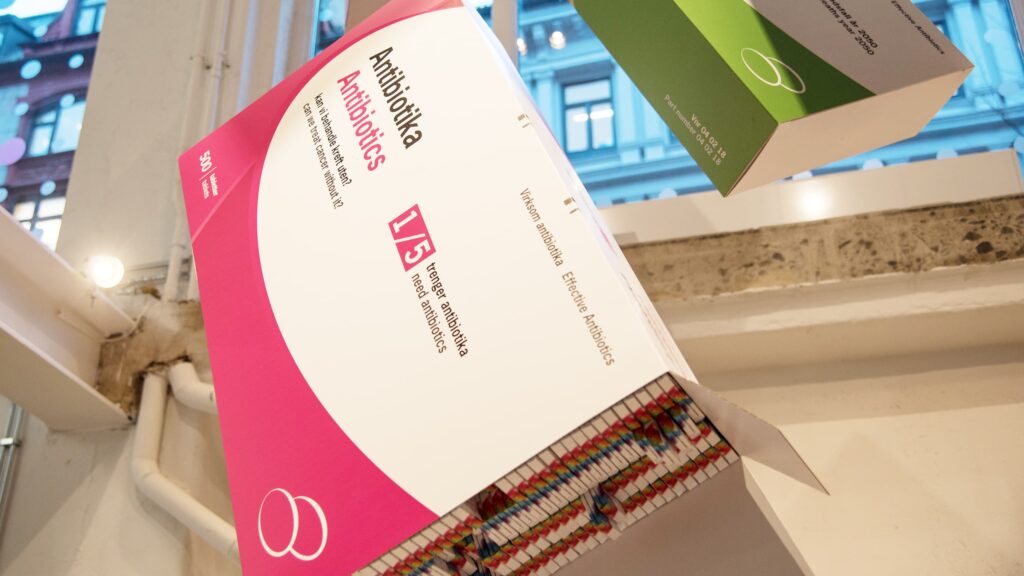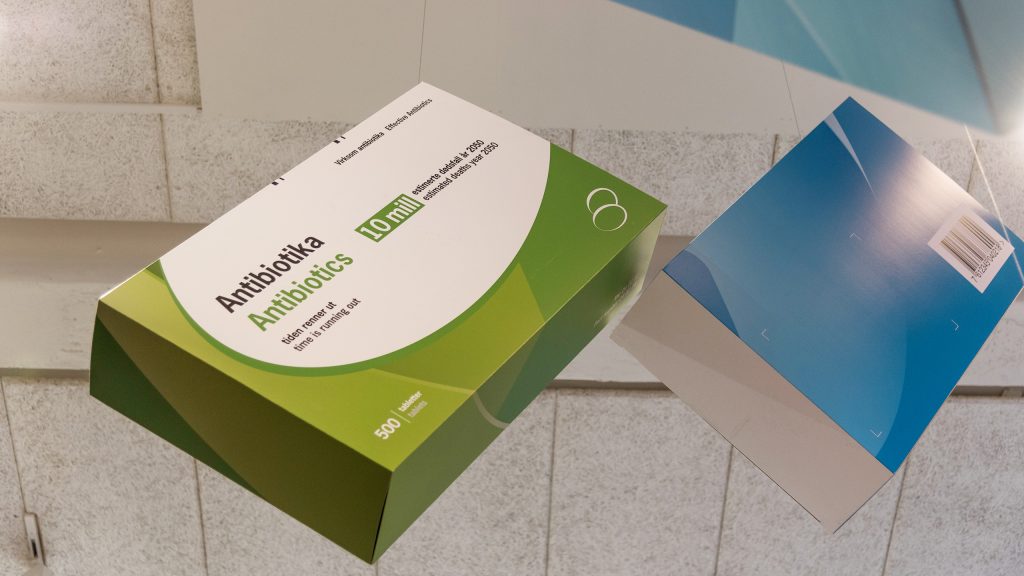The exhibition Hanging by a thread contradicts 8 widely believed myths about antibiotics. It was made by the Norwegian Cancer Society to inform people, so that we can reflect on the challenges, come together and discuss solutions.

The starting point for the exhibition was The Norwegian Cancer Society’s desire to explain the facts and myths about antibiotics and antibiotic resistance. The exhibition explains this in a simple and illustrative way. How can our awareness and attitude towards the use of antibiotics and the choices we make affect society and people’s health in the years to come?
For many cancer patients, antibiotics under treatment are absolutely crucial, and several cancer treatments cannot be performed without effective antibiotics. What will the future look like if we no longer have efficient antibiotics? Antibiotic resistance has devastating consequences for cancer patients.
Hanging by a thread – on tour in Europe
- The exhibition was first opened on World Cancer Day in February 2018, in The Norwegian Cancer Society’s Science Center in Oslo.
- In November 2018 the exhibition moved to Copenhagen and was part of the event World Antibiotics Awareness Week 2018 – in WHO UN City Copenhagen.
- In 2019 the exhibition has travelled to Brussels, Stockholm and Copenhagen.

8 myths about antibiotics
- If I have a cold or flu, I need to take antibiotics as soon as possible.
Colds and influenza are mainly caused by viruses and antibiotics will not work against viruses. Your best protection is to avoid infection – get vaccinated for influenza. - I always know when I need antibiotics.
You don’t, no-one does. Antibiotics should only be prescribed by a health professional who has reached a proper diagnosis taking into consideration which antibiotic to use and the appropriate duration of treatment. - Antibiotics are like vitamins, they help me stay on top.
Antibiotics are a precious resource that should be used with great care and only in situations where a medical professional has prescribed them. They should only be taken in very specific circumstances assessed by a doctor. - The antibiotics they use in farming aren’t the same as human ones.
Many animal and human antibiotics are one and the same. Everything that affects animal and environment health affects human health. There’s only one health. When we prevent resistance from developing in animals we also protect humans. - They are making new antibiotics all the time.
Unfortunately, very few new antibiotics have been marketed for decades. Resistant bacteria, on the other hand, renew themselves all the time. Antibiotic resistance is a natural phenomenon and misuse of antibiotics accelerates the process. - Antibiotic resistance doesn’t worry me, I never take antibiotics anyway.
It’s the bacteria that become resistant to antibiotics not the patient. Whether you have or haven’t taken antibiotics in the past does not influence how well they work on you. You might have been infected by a resistant disease that antibiotics are not able to fight. - There is nothing I can do about antibiotic resistance.
You can decide here and now to only ever take antibiotics prescribed for you by a healthcare professional, to take them exactly as prescribed and never to share antibiotics with someone they were not intended for. You can do a lot to combat antibiotic resistance. - Infection is infection – it doesn’t matter if it’s resistant.
Antibiotic resistant infections take a very long time to treat, they are expensive and, worst of all, they are more likely to kill. The risk of death is significantly higher when we cannot reach for antibiotics as an effective treatment.

